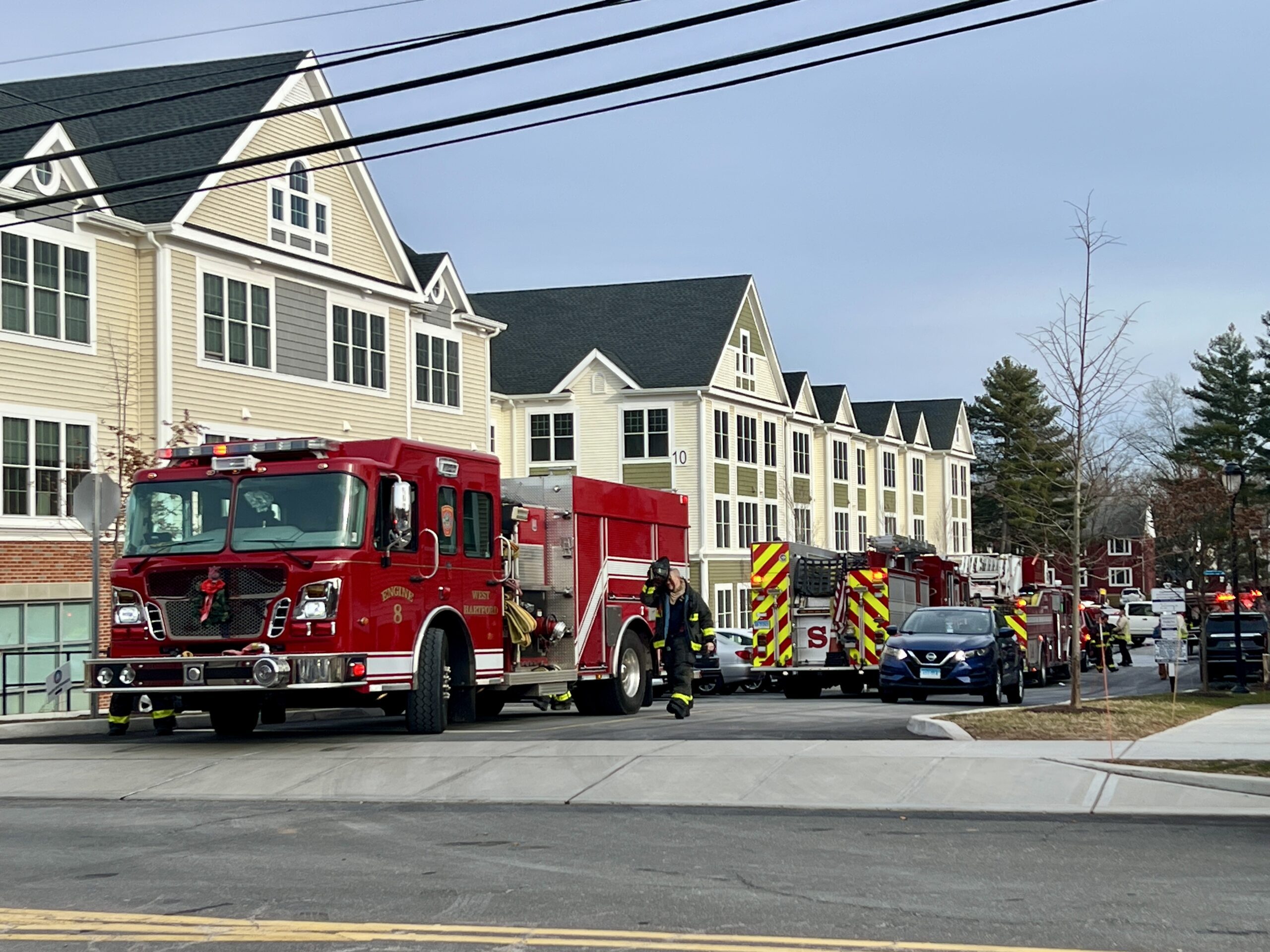From the West Hartford Archives: Bishop’s Tobacco Warehouse, Albany Avenue

Audio By Carbonatix
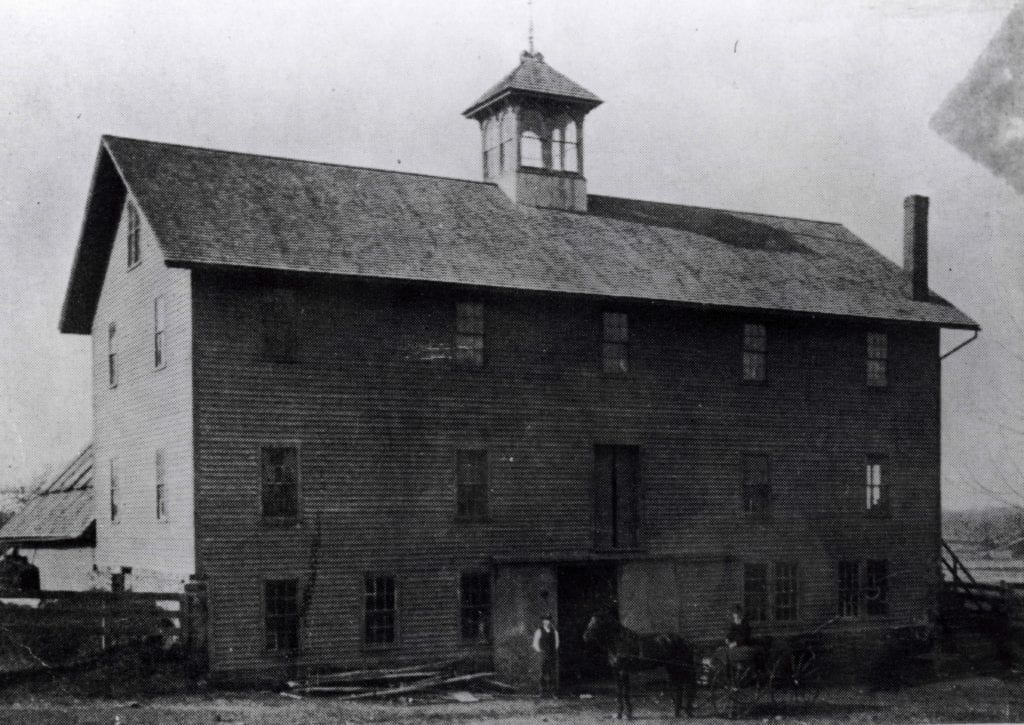
Joseph Bishop's tobacco warehouse. Photo courtesy of Noah Webster House & West Hartford Historical Society
Historian Jeff Murray takes a look into West Hartford’s past to uncover some surprising information, stir up some memories, or reflect on how much life has changed – or hasn’t changed at all. Enjoy this week’s ‘From West Hartford’s Archives’ …
By Jeff Murray
Joseph Bishop, who owned the property at the northeast corner of Albany Avenue and North Main Street, was a tobacco buyer. At its height, the business employed more than 50 people. According to his obituary, Bishop enlarged and reconstructed the old tavern at Bishop’s Corner around 1852 and made it into this tobacco packing warehouse about 200 feet east of the corner.
His daughter Lucia married six years later to Charles S. Griswold, who entered into a partnership with his father-in-law in 1871. Griswold had grown up at the historic family homestead at 114 North Main Street.
After Bishop’s death in 1906, the land and ownership of the business passed to Lucia and Charles Griswold, who continued the work under the name C. S. Griswold & Son. Apart from some singular fields in other parts of West Hartford, tobacco was mainly grown in the north end of town, especially along North Main Street north of Bishops Corner.
Griswold employed nearly 20 people in planting and harvesting by hand. After harvesting, the leaves were cured to reduce moisture, fermented, and then sorted based on quality, size, and color. Griswold had no trouble finding seasonal workers each winter to prepare the cured tobacco for storage, transport to Hartford, and sale on the market.
He and Lucia raised three children – Charles Allen, Joseph, and Ethel – at their home on Fern Street. In 1915, he suffered a stroke and declined in health for nearly a year until his death in 1916. His son Charles Allen, grandson of Joseph Bishop, then took over the business, having worked the farm for more than two decades.
Griswold took an active interest in town affairs and was the representative of West Hartford to the General Assembly in 1905. He was the first chairman of the Town Plan Commission, a longtime tax assessor, and a member of the Town Council for four years. He was also a president of the Business Men’s Association (the predecessor to our Chamber of Commerce). In 1914, he sold nearly the entire 90-acre farm to his son, C. Sedgwick Griswold, leaving himself with the tobacco warehouse.
He turned away from the tobacco farm and focused on his property on the south side of Fern Street. He laid out Hawthorne Road (behind the current site of Baptist Church on North Main Street) and built a new house for him and his wife. His son C. Sedgwick Griswold was a recent graduate of the West Hartford High School and was now father to an infant daughter (and a son on the way).
In 1917, he sold his 90-acre portion of the Griswold farm, including the farmhouse, to a Swedish immigrant named Helma Johnson. She had married Richard Johnson, a contractor who owned the company that laid the brick for Morley School and the Elmwood Community Church. Now in possession of the farm, the only piece of property remaining in the Griswold family was the lot with the tobacco warehouse at 2480 Albany Avenue.
In 1923, Charles A. Griswold sold it all to Richard Johnson (later, Andrew Freeburg would buy an interest in the property).
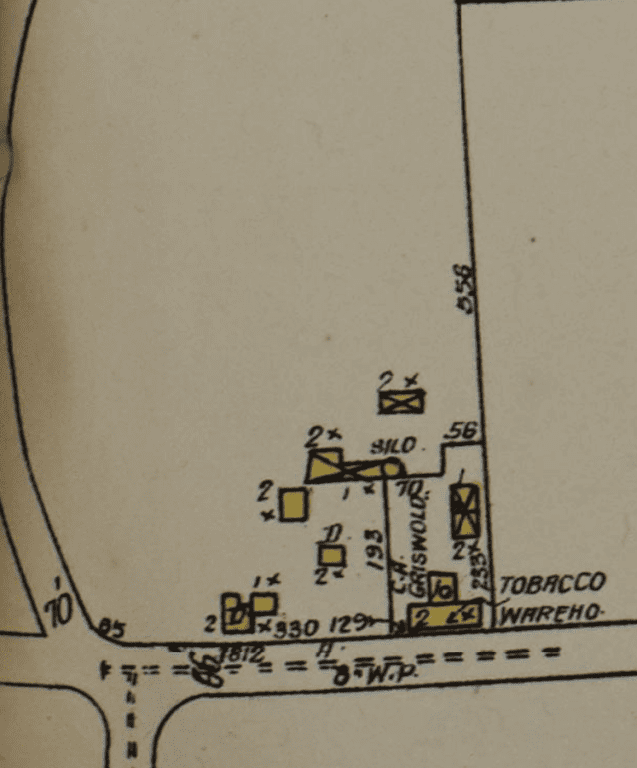
1923 map of the northeast Bishops Corner, showing Charles A. Griswold’s tobacco warehouse
In 1925, the Duco System, Inc. was formed to paint and repair automobiles, with the old tobacco warehouse site as the location of one of the shops for a few years until it was used by the Capitol Paint and Lacquer Spray Company.
In 1930, owners Richard Johnson and Andrew Freeburg leased the tobacco warehouse, now painted white, to Sherman Lougee for Lougee’s Wayside Furniture Store. With 10,000 square feet of floor space, the store leveraged the excellent location, vast land for parking, and distinctive Bishops Corner landmark to its advantage. Unfortunately, it had been conceived of before the Great Depression really took effect and by 1933, the furniture store went out of business.
The warehouse did become part of Great Depression history, however. The term “Hooverville” refers to the shanty towns built by the homeless and were named after President Herbert Hoover, who was widely blamed for the economy. These shanty towns were also called “transient camps” and were typically located on unused land on the outskirts of cities, populated mainly by individuals and families who had lost their homes due to the economic collapse.
The Hoovervilles that were national news were much larger and generally on private property, but by the time of FDR’s New Deal policies, transient camps were officially sanctioned by the government and regulated as such. Mayor Beach of Hartford reached out on behalf of the Federal Transient Camp Administration to create a transient camp behind Bishop’s old tobacco warehouse in 1934 – it was along a major road outside of the city, not used for active business, and would be temporary shelter for a few months until a permanent camp could be built elsewhere.
Despite some trouble at first (12 men were arrested in a week’s period for drunkenness and breach of peace), dozens were transferred by the summer to the more permanent camp that had been built in the Nepaug State Forest.
As if nothing had changed, the tobacco warehouse was once again used for a furniture store starting on Jan. 8, 1937, when Milton’s Wayside Furniture Store opened under Milton Gladstein. It may have been a sign of the slowly recovering economy or the resilience of local business across the city line, but whatever allowed Gladstein to open this store as a West Hartford branch prospered for years after, despite a fire in a rear building soon after it opened.
In 1959, Al Levin and Milton Green bought out Milton’s and remodeled all three floors for a new opening two years later. That did not last long though – Milton Gladstein had planned for a commercial building for a business and post office in the Bishops Corner neighborhood as early as 1958. By the early 1960s, the plan came to fruition and a new brick building was constructed in the summer of 1963.
The tobacco warehouse was demolished as a result, but in its place came Anderson-Little, a clothing retailer, which opened on October 10, 1963. They operated at this location through the mid-1970s.
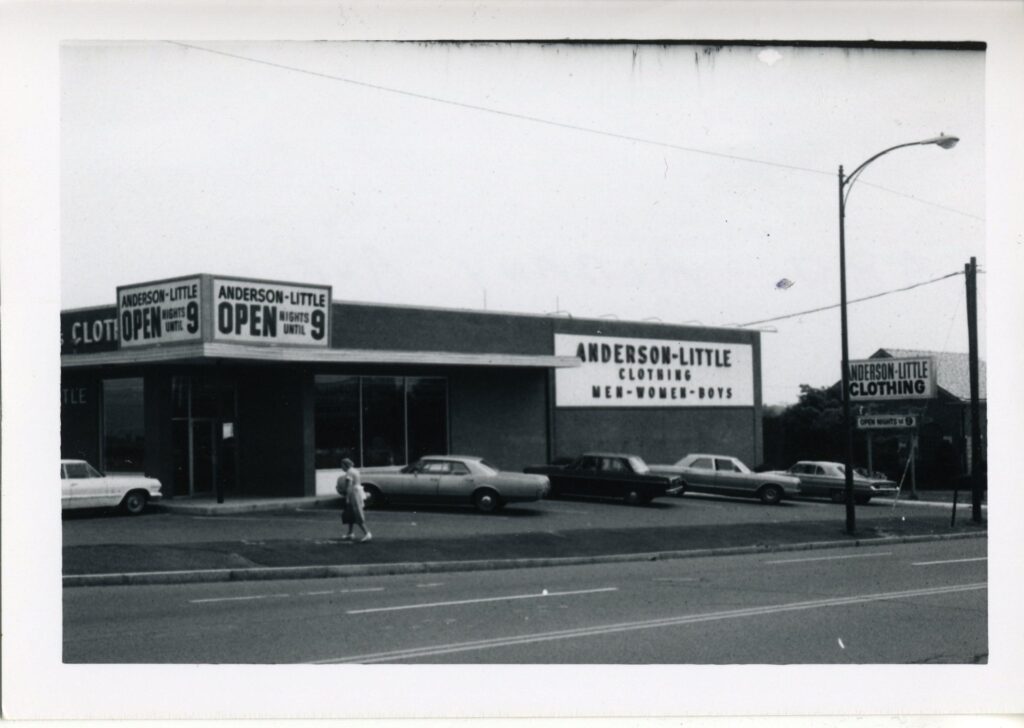
Anderson-Little in 1966
Photo courtesy of vNoah Webster House & West Hartford Historical Society
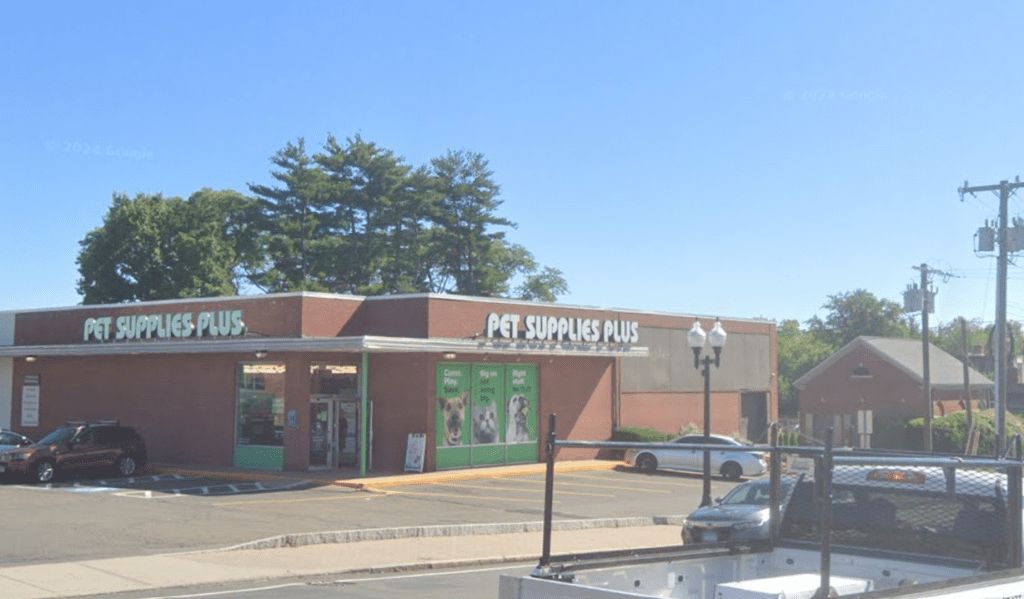
Albany Avenue in Bishops Corner where the tobacco warehouse once stood. Google Street View in June 2024
Jeff Murray was born and raised in West Hartford and has been involved with the Noah Webster House & West Hartford Historical Society since 2011 when he was a high school student and won the Meyer Prize for his essay on local history. Jeff routinely volunteers as local history researcher uncovering information for numerous museum programs such as the West Hartford House Tour and West Hartford Hauntings. Jeff works as a data analyst at Pratt & Whitney.
Like what you see here? Click here to subscribe to We-Ha’s newsletter so you’ll always be in the know about what’s happening in West Hartford! Click the blue button below to become a supporter of We-Ha.com and our efforts to continue producing quality journalism.



